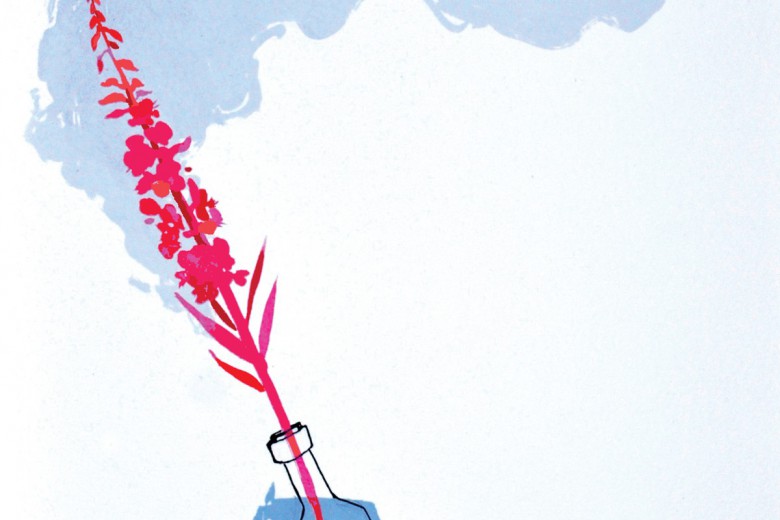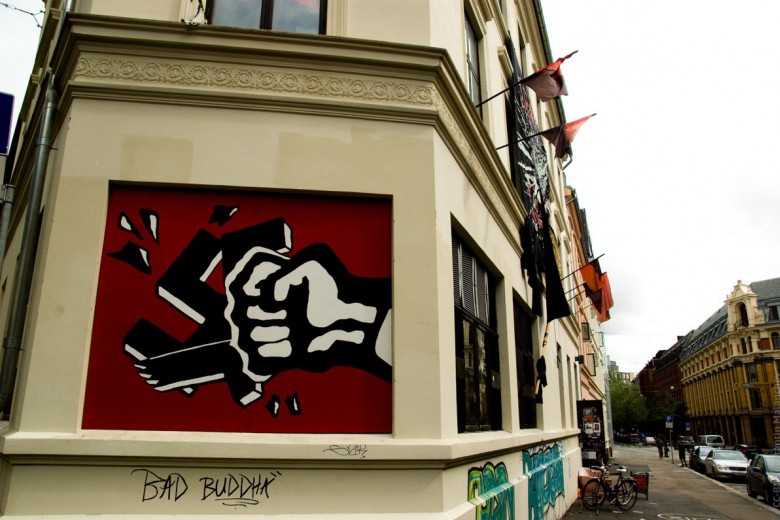“There was no doubt that it was a concentration camp.” This is what William Repka, a labour organizer who worked with Lethbridge sugar beet workers, thought upon seeing the Kananaskis Internment Camp in 1940. Repka, along with hundreds of other leftists, had been arrested under the Defence of Canada Regulations, a federal law implemented in September 1939 that allowed the government to censor hundreds of newspapers, ban political and cultural organizations, and arrest anyone critical of the state.
“I had naively felt I was helping to make Canada a better place to live in by helping to bring up the wages and working conditions of the poorest section of the population,” he later wrote in Dangerous Patriots: Canada’s Unknown Prisoners of War. “As a long-time anti-fascist, I couldn’t understand why I was being treated as a criminal in my own country.”
Because of his work with sugar beet workers, the state considered Repka a “labour agitator” under the Defence of Canada Regulations. Among his crimes was winning a wage increase for workers. While jailed, Royal Canadian Mounted Police (RCMP) officers tried to recruit Repka as an informant against the labour and anti-fascist movements. “They implied that terrible things would happen to me if I didn’t talk,” Repka wrote.
In Canada and throughout the Western world, the success of the 1917 Russian Revolution had produced a reactionary “Red Scare” among the Canadian ruling class that resulted in aggressively anti-communist domestic and foreign policies. At the same time, the Russian Revolution energized the Canadian left and labour movement, a galvanization that continued into the 1940s. Politicians, capitalists, and media tarred these groups as fundamentally foreign to Canadian society, on ideological and ethnic grounds. Unions were attacked, political parties banned, ethnic associations infiltrated, and mutual aid societies placed under police surveillance. Publications were forcibly terminated, activists arrested, and others deported against their will.
As the Canadian left continues to mobilize, we should understand ourselves as part of a century-old tradition in Canada, a tradition that has always opposed genocide, fascism, and the capitalist system – and has always faced police repression and accusations of “un-Canadian” behaviour for doing so.
While Canadian soldiers fought an anti-fascist war overseas, at home the state targeted the left for repression far more than the Canadian fascist movement. During the Second World War, four-fifths of those prosecuted for subversive literature in Canada were communists, the majority of banned groups were communist organizations, and most of the people arrested for violating the Defence of Canada Regulations were leftists, not fascists. Many of those interned were Ukrainian or otherwise Slavic in origin, and many were Jewish. The Canadian state also confiscated property belonging to working-class Ukrainian organizations and gave it to Ukrainian groups with right-wing or even pro-fascist sympathies.
Today, leftists and progressives in Canada continue to endure overtly political policing, such as when they organize against Canadian complicity in Israel’s genocide of Palestinians. In November 2024, a militarized unit from the Vancouver Police Department (VPD) raided the home of Palestine solidarity activist Charlotte Kates. In a massive show of force, VPD officers arrived in an armoured police carrier, fired flashbang grenades, broke down her door, and reportedly seized her computers and phones. The previous month, Ottawa had declared Samidoun Palestinian Prisoner Solidarity Network, of which Kates is international coordinator, a “terrorist entity.”
As the Canadian left continues to mobilize, we should understand ourselves as part of a century-old tradition in Canada, a tradition that has always opposed genocide, fascism, and the capitalist system – and has always faced police repression and accusations of “un-Canadian” behaviour for doing so.
Canada and the rise of fascism
In the 1930s, the Canadian fascist movement expanded, in many cases with the open support of those in government. While the Conservative Party under prime minister R.B. Bennett outlawed communist organizations and threw the party’s leadership in prison, they also channelled tens of thousands of dollars to Adrien Arcand, a vocal supporter of Nazism and self-proclaimed “Canadian Führer.” Fascist parties sprang up across the country – Arcand’s National Socialist Christian Party, Joseph Farr’s Nationalist Party, William Whitaker’s Canadian Nationalist Party – often backed by wealthy sectors, and always treated with kid gloves by police in comparison to the left.
The Conservatives were not the only mainstream Canadian politicians with pro-fascist views. As prime minister, the Liberal William Lyon Mackenzie King heaped praise upon Adolf Hitler, calling him a “very great man” and comparing him to Joan of Arc. King praised Hitler right up to 1938, a year before the Second World War began.
Prior to June 1941, the Canadian communist movement viewed the war in Europe as an inter-imperialist war and followed the Soviet line of non-aggression between the Union of Soviet Socialist Republics (USSR) and Nazi Germany. The left’s antiwar position – in which they were joined by peace groups, pacificists, and anti-conscriptionists – led to a crackdown on the left that was much harsher than the crackdown on fascism. For example, during a rally led by Canada’s most prominent fascist Adrien Arcand at Massey Hall in Toronto, anti-fascist demonstrators were violently attacked by horse-mounted police. Police pushed back any protesters approaching Massey Hall and later stood guard outside Arcand’s hotel. Meanwhile, police in Winnipeg failed to stop violence against socialist Ukrainians when they were attacked by far-right mobs.
In fact, the repression went far beyond the communist movement. Anyone viewed as progressive, pro-labour, or insufficiently war-like was painted as “un-Canadian.” These groups could face internment in one of several internment camps that dotted the nation.
The arrests
Jacob Penner, an elected alderman in Winnipeg and an early advocate for the minimum wage, unemployment insurance, and other progressive reforms, was the first communist politician interned during the war. His son Roland wrote in a memoir, “At no point over the course of two years of his internment was Dad, or any other of the almost 100 left-wing and communist internees, charged, let alone convicted, of any offence known to law.” The day of Penner’s arrest, police went to the Ukrainian Labour Temple in Winnipeg looking for long-time progressive activist John Naviziwsky. They caught him two days later on the road between Winnipeg and Winnipeg Beach, and he went to trial with Penner.
Police arrested Toronto physician Howard Lowrie, a lifelong social activist who provided free medical services to the poor and fought alongside the infamous Dr. Norman Bethune in Spain during the Spanish Civil War, despite protests that he had many patients who depended on him for treatment. Ben Swankey was arrested for possessing and distributing antiwar stickers. Mary Prokop, wife of labour activist Peter Prokop, suffered through an aggressive RCMP search when officers came to arrest her husband. “After [the officers] got through,” she wrote, “the apartment looked as if a hurricane had hit it.”
The head of the Canadian Seamen’s Union, J.A. “Pat” Sullivan, was also interned. The charge was extremely vague: “representations had been made,” the government claimed, that he was a communist. At the Petawawa Internment Camp, Sullivan was denied basic rights, including meetings with his lawyer, because as the government said, “it would appear that you are disloyal to Canada.”
In September 1940, the RCMP arrested Nova Scotian labour activist Charlie Murray in his home, where he was caring for his pregnant wife. “With no concern for my wife, the RCMP took me to Halifax,” he wrote. The Mountie who transported Murray to prison spewed threats, telling him, “Oh, how I would like you to make a break for it so I could shoot you down, you red bastard.”
After their release, many of the leftists immediately enlisted in the war against Nazism, and those who didn’t continued serving the anti-fascist cause on the home front. Even so, progressive internees continued to be classified as “enemy aliens.”
The Red Squad in Montreal, a secretive anti-communist police force, arrested labour activists Muni Taub, Kent Rowley, and Sidney Zarken. The men were taken to Camp Petawawa. As Muni Taub recounts in Dangerous Patriots, proper medical treatment was denied to the prisoners, and as a result, Zarken contracted Buerger's disease (a rare arterial disease) and had to have his leg amputated, while a man named Matthew Popovich died of a heart attack. Sidney Neal, editor of a left-wing Finnish newspaper, died of tuberculosis.
In the camps
While interned, labour activists and left-wingers were given the hardest jobs while the fascists, who were wealthy by comparison, were afforded privileges denied to the progressives. Prisoner Tony Bilecki noted in Dangerous Patriots, “There was a lot of discontent at the camp because the rich Italian internees had special privileges […] They had a lot of money to throw around and even the guards were very nice to them.” Internee Bruce Magnuson noticed this too: “There were also Italian fascists from Montreal and Toronto […] Class divisions were maintained in the camp very much as on the outside. The wealthy Italians were also able to get certain privileges. They could pay people to do their chores in the camp.”
Despite the internment of some German and Italian-Canadian fascists, the RCMP was much less alarmist about ethnic communities associated with fascism than those associated with communism. In fact, as explained in Secret Service: Political Policing in Canada from the Fenians to Fortress America, “the RCMP [was not] particularly hawkish about the threat posed by German and Italian Canadians, despite well-founded concerns about Nazi and Fascist activists among their ranks.”
After Nazi Germany’s June 1941 attack on the Soviet Union, left-wing prisoners appealed to the minister of justice for release so they could fight fascism in Europe. The minister refused.
The state refused demands to release interned leftists well into 1942. The RCMP commissioner stated, “We are having quite enough trouble as it is with respect to Communists generally…especially with so great a foreign population in this country, fertile ground for agitators.” The previous year, the same commissioner had claimed that communists were a greater threat to Canada than fascists – even as Canada was fighting a war against fascism overseas.
After their release, many of the leftists immediately enlisted in the war against Nazism, and those who didn’t continued serving the anti-fascist cause on the home front. Even so, progressive internees continued to be classified as “enemy aliens.” They were ordered to report twice monthly to designated military barracks.
Despite dominant myths that Canada was and remains a committed progressive force on the world stage, this wasn’t true in the 1930s and ’40s and it isn’t true now.
Some former prisoners continued to be harassed by the RCMP. When William Repka returned to Lethbridge, he enlisted in the army but was discharged due to the camp’s negative effects on his health. He got a job in a Toronto factory but recounts in Dangerous Patriots that an RCMP officer quickly made sure he was fired: “I had not been there very long when an RCMP came to check up on me. He told my employer I had been interned under the Defence of Canada Regulations, and I was promptly fired. This kind of harassment went on for some time for a number of the internees.”
Political policing in the 1940s and today
As Israel commits a genocide against Palestinians, the Canadian state is using its repressive powers to brutalize and criminalize those who oppose this indiscriminate slaughter. In May 2024, the VPD violently dispersed a rail blockade. That same month, police in riot gear used tear gas and batons to repress a street protest in Montreal. Meanwhile a secretive team in the Toronto Police Service’s Hate Crimes Unit, known as Project Resolute, has specifically targeted Palestine solidarity activists, recalling the Red Squads of early 20th-century Canada. Under Project Resolute, officers have executed nighttime raids and ransacked activists’ homes.
Many Canadians have been fired or denied work for their opposition to Canadian state policy. Meanwhile Thomas Carrique, Ontario Provincial Police commissioner, directly blamed immigration for the spike in protest activity. “Through immigration,” he said, “thousands of people, who may have had an orientation towards violence as a means of expression or activism, continue to arrive in Canada every year.”
The overtly political slant of 1940s policing remains to this day. A particularly illustrative example is the so-called “Freedom Convoy.” Organized by right-wingers in January 2022, the Convoy and its associated protests caused billions of dollars in economic losses, but police did not intervene for three weeks. By contrast, police waited just 16 hours before attacking the student encampment for Palestine at the University of Calgary, one day before clearing the York University encampment, and a few days before destroying the University of Alberta encampment, even though campuses are generally isolated from the city centre and important urban infrastructure.
Despite dominant myths that Canada was and remains a committed progressive force on the world stage, this wasn’t true in the 1930s and ’40s and it isn’t true now. Like labour activists in the 1940s, Palestine solidarity activists today face a reactionary state willing to use its repressive powers to prevent any change to the status quo, even if that status quo involves complicity in genocide.
Nonetheless, Canadians will continue to mobilize against genocide, imperialism, and colonialism. As we do so, we should look back for inspiration on the resilience of activists like William Repka, interned because he supported the rights of working people.







